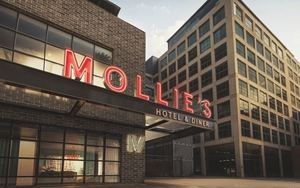BOSTON is huge. That’s the city in Massachusetts, not Lincolnshire.
No matter how many times you have been to America, you get here and are confronted again with its sheer scale, its dwarfing vastness. Its ambition stretches out in front of you and around you and above you, and you find yourself ant-like staring up agog at its celestial skyscrapers.
What an opportunity we had with the Oxford Road Corridor and Pomona...
But at ground level, Boston feels distinctly European. It is famously walkable, well laid-out, well-connected and well-fed, a city with brains and brawn, a dynamic and diverse city with large and well-established Italian, Irish and other populations.
It is home to two of the best universities in the world and leads current global thinking around knowledge-based innovation. Microsoft, Pfizer, Apple and Google all have regional HQs here and space, unsurprisingly, comes at a premium. Despite that premium, it is a city which has the fifty acre Boston Common slap-bang in the middle of it, a centre-piece in the city’s ‘Emerald Necklace’.
The necklace is over a thousand acres of interconnected parkland designed in the 1860s, and maintained over the last decade with some $60million public investment in Boston’s parks and waterways.
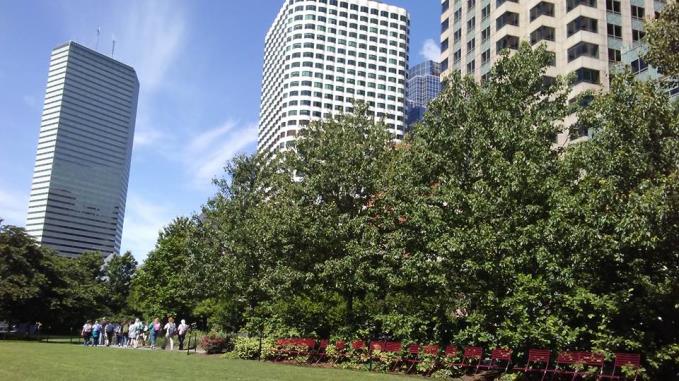 Boston Greenway
Boston GreenwaySince 2008, the city’s impressive collection of greenspace has included the Rose Fitzgerald Kennedy Greenway, a 1.5 mile linear stretch of high quality landscaped parkland running right through its downtown. A 60/40 private/public initiative, the greenway was built as part of the city’s Big Dig project and occupies the landfilled site of the former ‘Central Artery’ expressway. It connects the city’s North and South Stations overland which were meant to be connected by rail as part of the same project but weren’t. Yes, even American projects run out of cash.
People walk along it, cycle along it, walk their dogs, picnic on it, meet on it, talk on it. There’s a revolving programme of international contemporary art exhibited along it, and it is beautifully maintained. It’s hard to believe when you are sat on its manicured grass with your fresh Italian coffee and cannoli pastry that you are in the heart of the tenth most densely populated city in the US. Only the ever present - but, juxtaposed against the topiary, somehow beautiful - skyscrapers, give the game away.
And my question as I sat there with a face full of cannoli (it could well have been my second) was this: WHY, SIR RICHARD, WHY? Why can’t we have something like this in Manchester? And I emphasise the “something like this”.
I realise we haven’t got the Kennedys (although we do have Peel), and I am not necessarily proposing that we all grab a shovel and start shifting landfill. It needn’t be, and spatially speaking, arguably couldn’t be, of the same scale, but that’s not the point.
The Piccadilly Gardens debacle rolls on, Parsonage Gardens varies from overgrown zone to all right but very special zone. We had Martha Schwartz in town last month lamenting the infrastructural vandalism that has essentially marker-penned all over her original design for Exchange Square, and my own bugbear (as an erstwhile NQ resident), Stevenson Square remains less of a square and more of a through-route, punctuated by the ever dominant bus lay-bys.
Yes, we’ve made some progress. Community-led groups like A New Leaf have secured some beautiful blossom trees for the NQ (despite the ludicrously prohibitive costs involved in planting urban trees – an average of £2000 per tree). We have the, fairly anodyne, pseudo-grass of Spinningfields, and there are distinctly green coloured bits in the plans for the forthcoming, if excruciatingly titled, Circle Square (is it too late?). But still the city centre signally fails in its green provision, despite the widely evidenced beneficial impacts for health, climate, easing traffic congestion and supporting innovation while giving people (and ideas) space to breathe. It’s hard to understand why Manchester fails to prioritise green space in its spatial planning and delivery.
What an opportunity we had with the Oxford Road Corridor and Pomona. To concentrate on the first of these, what we are creating is more space for buses and a ‘Dutch style’ bike lane. Imagine if instead we had tunnelled under and created a subterranean bus rapid transit system for our footsore students, or, easier, just diverted the buses and greened the lot, connecting the city and our knowledge centre with a walkable, cycleable greenway: “The Sir Richard Leese Greenway”.
Yeah, it would have been hugely expensive but big ambitions deliver more excitement and more investment. Maybe these are all pipe dreams, maybe our civic mechanisms don't work as they do elsewhere, but it seems so many in Manchester want more nature in their city centre, so why can't politicians and developers at least make an attempt to deliver on those wishes?
All eyes are on Europe at the moment, and in terms of infrastructure models, have been for some time. But in developing our thinking about urban greenspace, pouring ourselves a cup of American ‘get-go’ might do us some good.
 Greenway lolling
Greenway lolling
 Greenway flowers
Greenway flowers






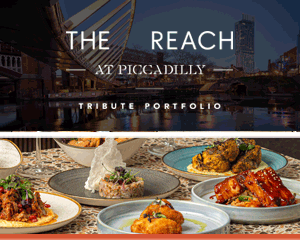


 Boston Common
Boston Common
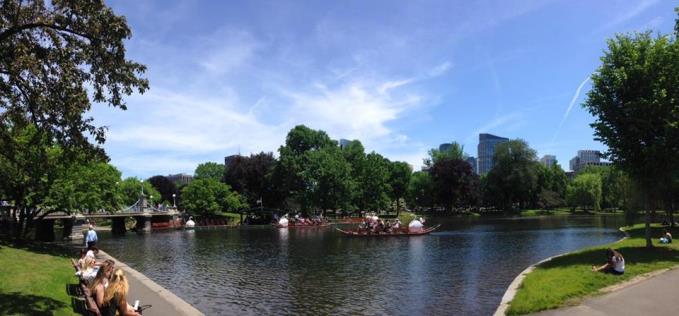 Boston Common lake
Boston Common lake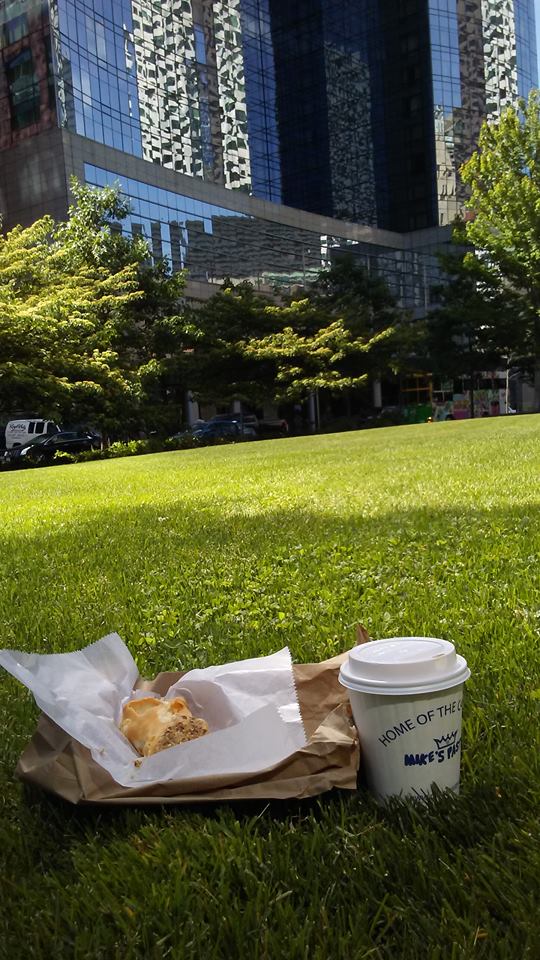 Lawn pleasures
Lawn pleasures Powered by
Powered by 


